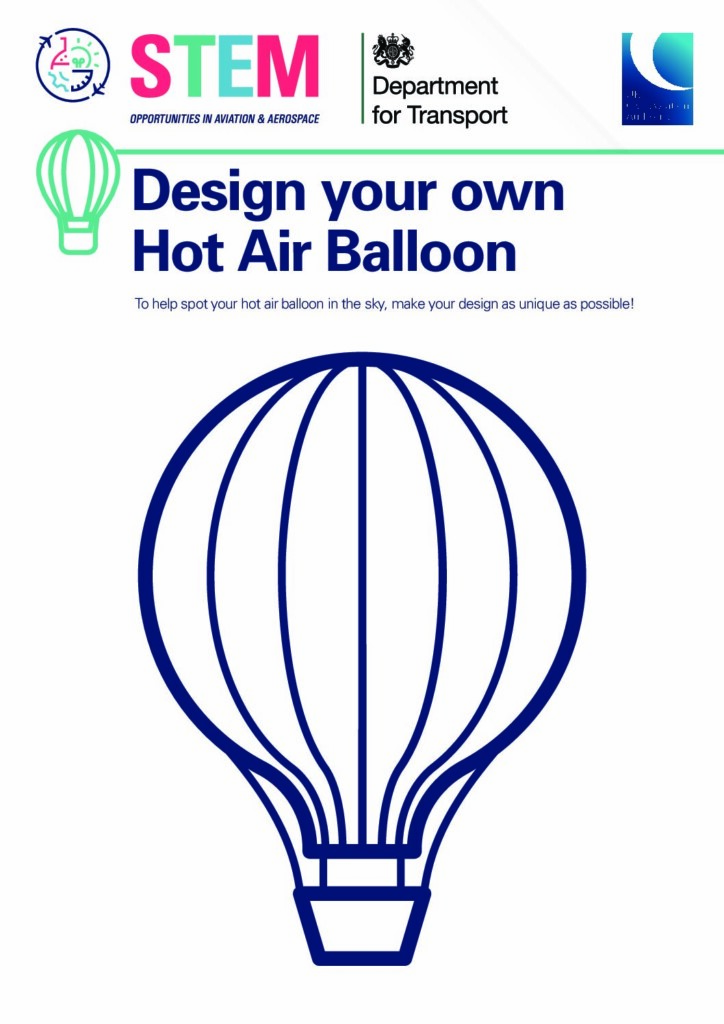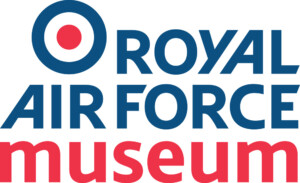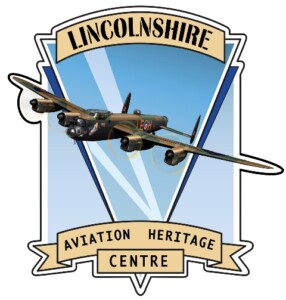Aviation Timeline Resources
Check out our brilliant resource sheets below which are all designed to help support teaching and conversations around the history of aviation.
Here are some other great links to visit

Design your own Hot Air Balloon
Download
Comic Strip Activity
Download
WW2 Propaganda Poster
DownloadAviation Timeline
Aviation has come a long way in a short space of time as you can see from this timeline!
We think knowing about aviation’s history will help future generations to create lots more scientific and technological improvements to our world.
The first hot air balloon was designed by the Montgolfier Brothers in Paris. Did you know that the first passengers on the hot air balloon were a sheep, a duck, and a rooster!
1783
Up, up, and away!
English philosopherGeorge Cayley credited with introducing the world to the study of aerodynamics. He developed the first concept of a fixed-wing flying machine and designed the first glider reported to have carried a human aloft.
Did you know he was the first to identify the four forces of flight (weight, lift, drag, thrust).
1809-1810
Aerodynamics
French engineer Henri Giffard manned the first-ever powered and controllable airborne flight. He traveled almost 17 miles from Paris to Élancourt.
1852
Powered air travel is possible
German engineer Nikolaus Otto devised a lighter, more efficient, gas-powered combustion engine, providing an alternative to the previously universal steam-powered engine.
1876
The internal combustion engine changes everything
The first powered, controlled flight in a plane was designed and built by the Wright Brothers. The flight took off from Kitty Hawk Beach inNorth Caroline.
The Wright Brothers didn’t have an advanced way to turn right or left in their aircraft and the flight lasted just 12 seconds!
1903
Aviation the Wright way
Hilda Hewlett becomes the first British woman to earn a pilot’s license on August 29, 191. She attended the National Art Training School in South Kensington before becoming involved in aviation.
Did you know she taught her son to fly the same year?
1911
Artist to Aviator
The First World War was the first major conflict involving the large-scale use of aircraft.
The Royal Air Force (RAF) was formed towards the end of the war in 1918.
1914-1918
First World War
Eugene Jacques Bullard was born in Georgia and emigrated to Europe when he was 17. He joined the French flying service Aéronautique Militaire in 1916 and became a pilot in 1917.
When the United States entered World War I, Bullard applied to join the U.S. Air Force but was rejected because of his race.
1917
First African American combat pilot
British aviators John Alcock and Arthur Brown make the first non-stop flight across the Atlantic Ocean from Newfoundland to Clifden in County Galway.
1919
Across the Atlantic
The first scheduled passenger flight flew from London to Paris in a converted First World War bomber plane.
The flight was scheduled tofly daily and paved the wayfor modern commercial airlines today.
1919
Bonjour Paris!
Jim Crow-era U.S. flight schools wouldn’t accept a Black woman,Bessie Coleman, one of 13 siblings, didn’t let that stop her. She learned French so she could apply to the Caudron Brothers’ School of Aviation in Le Crotoy, France.
Including her soon-to-be trademark loop-the-loop and figure-8 aerial maneuvers—she became renowned for her thrilling daredevil air shows.
1921
First Black woman to earn a pilot’s license
Eight U.S. Army Air Service pilots and mechanics, flew four airplanes named after American cities: “Seattle”, “Chicago”, “Boston” and “New Orleans”.
Only two planes completed the journey: “Chicago,” piloted by Lowell Smith and Leslie Arnold, and “New Orleans,” helmed by Erik Nelson and John Harding Jr.
Circumnavigating the globe by air for the first time took 175 days. They stopped 74 times along the way.
1924
First round-the-world flight
Aged 25, Charles Lindbergh makes the first solo, non-stop transatlantic flight from New York to Paris, lasting 34 hours.
1927
Riding Solo
Swiss physicist Auguste Piccard and his assistant Charles Kipfer were the first to ride a balloon into the stratosphere .In a 17-hour flight their balloon ascended to an astounding altitude of 51,775 feet(15,781 meters).
1931
First flight into the stratosphere
In 1932, Amelia Earhart sets out to become the first women to fly on her own across the Atlantic Ocean. She flew 3,230 kilometres from Newfoundland, Canada to Northern Ireland.
1931
‘There’s more to life than being a passenger’
So-called “true” helicopters — aircraft topped with horizontally revolving rotors to provide propulsion and lift — made their first appearance in the 1930s, historian Spencer C. Tucker wrote in the book “Instruments of War: Weapons and Technologies that Have Changed History” (ABC-CLIO, 2015). A prototype designed by German engineer Heinrich Focke first took flight on June 26, 1936.
1936
First helicopter flight
Aviation firmly established itself as a critical element of modern warfare during the Second World War with major technological developments.
One of the first major military campaigns fought entirely by air forces was the Battle of Britain. This was a military campaign in which the British Air Force defended Britain against large-scale attacks by the Luftwaffe.
1939-1945
Second World War
An ace combat fighter during WWII, Chuck Yeager earned the title “Fastest Man Alive” when he hit 700 m.p.h. while testing the experimental X-1 supersonic rocket jet for the military over the Mojave Desert in 1947.
Being the first person to travel faster than the speed of sound has been hailed as one of the most epic feats in the history of aviation—not bad for someone who got sick to his stomach after his first-ever flight.
1947
Chuck Yeager breaks the sound barrier
British-manufactured de Havilland Comet took its first flight in 1949—boasting four turbine engines, a pressurized cabin, large windows and a relatively comfortable seating area—it marked a pivotal step in modern commercial air travel.
Early passenger air travel was noisy, cold, uncomfortable and bumpy, as planes flew at low altitudes that brought them through, not above, the weather.
1949
The world’s first commercial jetliner takes off
With the debut of the sleek 707 aircraft, touted for its comfort, speed and safety, Seattle-based Boeing ushered in the age of modern American jet travel. Pan American Airways became the first commercial carrier to take delivery of the elongated, swept-wing planes, launching daily flights from New York to Paris.
1954-1957
Boeing glamorizes flying
The motor gliderBrditschka MB-E1performs the first manned flight by an electrically powered aeroplane.
The flight lasted for 9 minutes from Linz in Austria and was the first electric aircraft to fly under its own power with a person on board.
1973
An electric flight
In the greatest aviation disaster in history, 583 people were killed and dozens more injured when two Boeing 747 jets—Pan Am 1736 and KLM 4805—collided on the Los Rodeos Airport runway in Spain’s Canary Islands.
1977
Disaster at Tenerife
The U.S. Air Force developed and debuted the first fly-by-wire operating system for its F-16 Fighting Falcon fighter plane. The system, which replaced the aircraft’s manual flight control system with an electronic one, ushered in aviation’s “Information Age,” one in which navigation, communications and hundreds of other operating systems are automated with computers.
1978
Flight goes electronic
The Rutan Voyager aircraft takes off from California to complete the first non-stop, round the world flight. It took 9 days and has only been done on one other occasion in 2006.
1986
Around the world without landing
Beverley Bass captains the first all-female airliner crew on an American Airlines Boeing 727 flight between Washington DC and Dallas.
Beverley and pilot Stephanie Wallach founded the International Society of Women Airline Pilots, which began as a group of women aviators but later changed into a program providing career support and mentorship to aspiring pilots.
1986
First all female crew
The Soviet Union fly the Tupolev Tu-155 making it the first aircraft to fly powered solely by hydrogen.
The Tu-155 flew approximately 100 flights before it was placed in storage, although not all flights were powered by hydrogen.
1988
Hydrogen powered flight
The Airbus A380 (the world’s largest passenger airliner) makes its first flight.
The iconic A380 has flown over 800,000 flights carrying more than 300 million passengers since its entryinto service.
2005
Airbus’ first flight
The first helicopter landing on the summit of Mount Everest.
Didier Delsalle has the record for the highest landing of a helicopter but he had to complete the feat twice because the first time his recording equipment didn’t work and so he didn’t havethe proof!
2005
Summiting Mount Everest
Virgin Atlantic Global Flyer sets the longest non-stop flight, flying for 25,766 miles from Kennedy Space Centre to Bournemouth Airport.
Unusual for a modern civil aircraft, the GlobalFlyer has only a single jet engine.
2006
The longest flight
Solar Impulse 2 becomes the first aircraft to circumnavigate the globe using only solar power. In 2016 Solar Impulse 2 also becomes the first aircraft to fly non-stop across the Atlantic using solar power.
The longest leg of the journey was from Japan to Hawaii.
2015-2016
Solar-powered flight
Jannicke Mikkelsen and Magdalena Starowiczbecome the first females to circumnavigate the globe via both poles.
A documentary called ‘One More Orbit’ was detailing the feats of this mission.
2019
Pole to pole record
First powered, controlled takeoff and landing on another planet by NASA’s Ingenuity rotorcraft.
The tiny rotorcraft weighs about four pounds, with a fuselage roughly the size of a tissue box. It is hoped these technologies might be part of future robotic and human missions to Mars.


